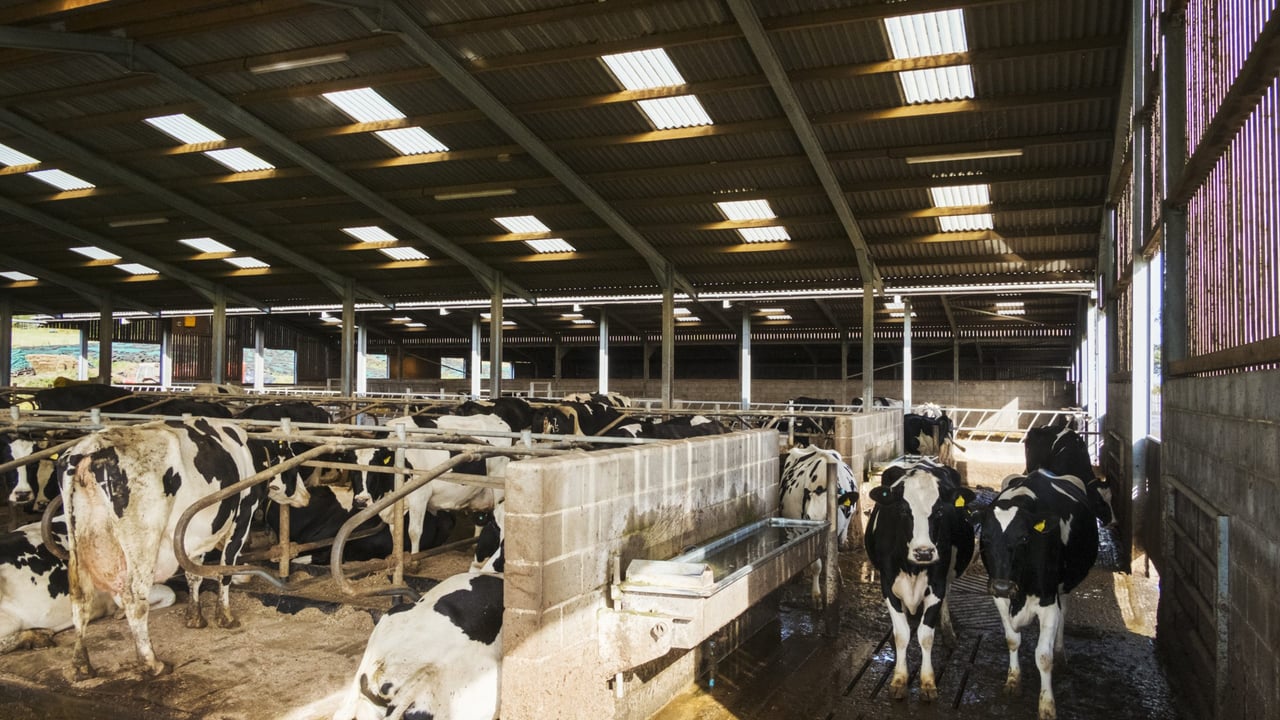Controlling parasites during winter housing
Over the next few months, while cattle are housed, controlling and treating parasites will be an essential task for dairy farmers.
Parasite control prior to housing or just as cows are coming is crucial, as the parasites are a major cause of underperformance in livestock, and in some cases can result in death.
Previous studies have shown that parasite infestations can result in 30% extra cost during heifer rearing.
The main parasites that need to be targeted are lungworms, stomach worms, and liver fluke, along with external parasites, such as biting and sucking lice and mites.
Worms
Worms are one of the most common forms of parasites found in cattle, and while older cattle can build up a resistance, younger animals are often left susceptible to the parasites as they have no resistance.
Therefore, they must be treated as a priority.
Creating a strategic dosing plan and choosing the correct products is the key to ensuring the highest level of cattle performance while reducing the risk of anthelmintic resistance.
Roundworms and stomach worms are the two main infestations seen in Irish dairy cows.
Roundworms are usually found in the gastrointestinal tract, where they deprive the animal of nutrients by eating tissue, sucking blood, or eating stomach contents.
Stomach worms are a type of roundworm that live in the abomasum of cattle.
The most common stomach worm in Ireland is called Ostertagia ostertagi, with type II Ostertagia often seen in yearlings following their first grazing season.
This is because the larvae that are eaten in September do not go through normal development but instead remain dormant in the gastric glands of the animal.
If they are not eliminated, there is the potential for thousands of larvae to simultaneously develop to adults and emerge in early spring, creating huge performance issues in the herd.
Controlling parasites
When housing cattle, follow a strategic worming plan; however it is important to note that a lot of adult cattle over two-years-of-age will have built up a natural immunity to worms.
Despite this, any symptoms - such as poor thrive, weight loss, or reduced appetite - should be investigated further and farmers should ask their vet for advice.
Lungworms infect the airways of cattle and can cause parasitic bronchitis, also known as ‘hoose’, for which livestock should be treated with either a white, yellow, or clear drench.
It is important that farmers know what developmental stage the stomach or lungworm they are trying to target are at, as this will help to assess if re-dosing is be required to ensure that eggs, larvae, and adult worms are all controlled.
Liver fluke is influenced by the climate and thrives in warm, wet weather, similar to what we have experienced this autumn.
It takes three months for fluke to develop in the liver of livestock, which is why it is of utmost importance to understand which stage you are treating.
The first month they are called ‘early immature’, the second month they are called ‘immature’, and the third month they are known as ‘adults’.
By dosing for fluke at the time of housing, you will potentially only kill off the adult fluke. By waiting for approximately six weeks after housing before treatment, it will be much more effective.
Products which are triclabendazole-based will kill almost all stages of fluke; however, cases of resistance to these products are becoming common due to overuse.
Winter housing is also an ideal environment for external parasites such as lice and mites to thrive and no matter what the ages of your livestock are, there is no resistance to these parasites.
Therefore, any signs of scratching or hair loss should be considered an early indicators of a problem which will lead to poor performance and discomfort.
Effective treatment such as a pour-on is advised as cattle head indoors.
Some farmers clip their animal’s backs and tails at housing to reduce cover for these parasites to thrive in.
Back and tail clipping also reduces sweating and boosts animal hygiene.





